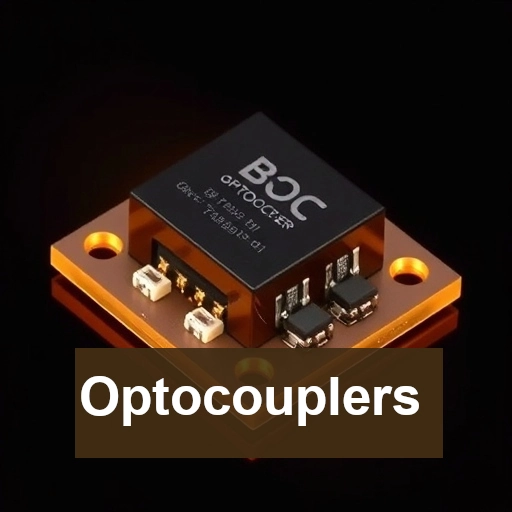Optocouplers, also known as opto-isolators, are electronic components that transfer electrical signals between two isolated circuits by using light. These components are essential for protecting sensitive electronic circuits from high voltages and noise while ensuring signal integrity across electrically isolated systems. Optocouplers are widely used in various applications, such as interfacing microcontrollers with high-voltage systems, signal isolation in communication equipment, and in power electronics.
This article will provide an in-depth overview of optocouplers, their working principles, and how to use them in practical circuits.
What is an Optocoupler?
An optocoupler typically consists of an LED (light-emitting diode) and a photosensitive element, such as a photodiode, phototransistor, or photometric element. The basic function of the optocoupler is to use light to transmit electrical signals across an electrical barrier, which ensures isolation between different parts of a circuit.
How Does an Optocoupler Work?
The operation of an optocoupler can be broken down into several key steps:
- Signal Input – A signal (usually a voltage or current) is applied to the LED side of the optocoupler. The LED is designed to emit light in response to the applied electrical signal.
- Light Emission – The LED emits infrared light (in most cases) when a current is passed through it, corresponding to the signal being sent. The intensity of the light emitted is proportional to the input signal’s amplitude.
- Signal Transfer via Light – The emitted light travels across a small air gap or transparent medium to the photodetector. This physical separation ensures electrical isolation between the two circuits.
- Signal Detection – The photodetector on the output side of the optocoupler detects the light and converts it back into an electrical signal. Depending on the type of photodetector used (phototransistor, photodiode, etc.), the output signal may be a current or voltage corresponding to the input signal.
- Output Signal – The output signal is then fed into the next part of the circuit, now electrically isolated from the input, but with the same logical information intact.

The key benefits of using optocouplers include:
- Electrical Isolation: They separate two circuits to prevent high voltages or electrical noise from interfering with sensitive electronics.
- Signal Integrity: They help maintain the quality of the signal between circuits by avoiding direct electrical connections.
- Protection: Optocouplers prevent components in low-voltage circuits from damage by high-voltage spikes or surges.
Types of Optocouplers
There are several types of optocouplers, each suited for different applications. Some common types include:
- Phototransistor Optocouplers – These are the most common type of optocouplers and are used when the output needs to drive a load. They provide a high current gain and can work with a variety of voltage levels.
- Photodiode Optocouplers – Used for faster switching speeds and lower power consumption. They are commonly used in communication systems and high-speed data transmission applications.
- Photometric Optocouplers – These provide an analog output that is proportional to the input signal. They are often used when analog isolation is required.
- Triac Optocouplers – These are used for switching AC loads and can provide isolation for power circuits, making them ideal for applications like motor control and dimmer switches.
- High-Speed Optocouplers – These are designed for high-frequency signals, such as those used in digital communication systems or for high-speed data transfer.
Conclusion
Optocouplers are invaluable components for isolating different parts of an electronic system while allowing for the transfer of signals between circuits. Their ability to protect sensitive electronics from high voltages, noise, and interference makes them essential in a wide range of applications, from power supply regulation to communication systems and motor control.
When designing circuits with optocouplers, understanding their characteristics, selecting the appropriate type for your application, and properly calculating the required resistors and component values are key to achieving optimal performance. Whether you’re building microcontroller interfaces, industrial control systems, or communication devices, mastering optocouplers can enhance the reliability and safety of your projects.

